
University of Cape Coast, Diagnostic Imaging & Sonography Programme 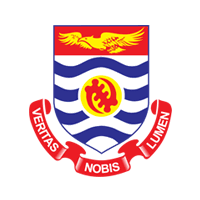
Available Undergraduate Programmes in Diagnostic Imaging & Sonography
The School of Medical Sciences offers two specialised Bachelor of Science (BSc.) programmes in Diagnostic Imaging and Medical Sonography. These programmes are designed to train skilled professionals in radiography and ultrasonography, meeting the growing demand in healthcare.
Programmes Offered
- BSc. Diagnostic Imaging Technology (Radiography) – 4 years (Regular Mode)
- BSc. Diagnostic Medical Sonography (Ultrasonography) – 4 semesters (Regular Mode)
ADMISSION REQUIREMENT
BASIC ENTRY REQUIREMENTS
Entry requirements for admission into programmes of study for local applicants include the following:
- WASSCE/SSSCE: Applicants should have credit passes in six (6) subjects with an overall aggregate of 36/24 at the WASSCE/SSSCE, respectively. Three of the six subjects should be core subjects: English Language, Mathematics, Integrated Science, or Social Studies, and three must be in relevant electives.
For purposes of admission, a credit pass in:
- WASSCE means A1 – C6
- SSSCE means A–D
- General Certificate of Education (GCE) Advanced Level: Applicants should, in addition to credit passes in five (5) GCE ‘O’ Level subjects (including English and Mathematics), have three (3) passes in the relevant subjects at the Advanced Level.
- General Business Certificate Examination (GBCE): Applicants should have credit passes (A-D) in six (6) subjects comprising three (3) core subjects (including English Language and Mathematics) and three (3) relevant elective subjects.
- International General Certificate of Secondary Education (IGCSE): Applicants should have credit passes in five (5) GCE ‘O’ Level subjects (including English and Mathematics) and three (3) passes in the relevant subjects at the Advanced Level.
- International Baccalaureate (IB): Applicants should have a minimum of grade 4 at the Higher Level in three (3) subjects relevant to the programme of choice (minimum of grade 5 for Health and Allied Sciences). Applicants should, in addition, have a minimum of grade 4 in English/Literature and Mathematics (SL).
- American High School Grade 12 Examinations. Applicants should have a Final Grade point of 3.0.
FEE-PAYING APPLICANTS
Fee-paying facilities are available for candidates/applicants who are unable to meet the competitive cut-off points determined by the Joint Admissions Committee.
INTERVIEW
As part of the selection process, the applicant is required to pass a written test followed by an interview.
Follow us on WhatsApp for more updates: https://whatsapp.com/channel/0029VaCyYGIFHWpx22L38a2K
Seekers Consult
Contact Us for Your Study Abroad Journey
We search for schools and check available scholarships for you
Contact: 0550414552 / 0362297079

Loan for government workers
Transcript Application
English Proficiency
Recommendation letter
Project work/thesis for undergraduate, master’s, and PhD students.
Apply for Affidavit, Gazette instantly
Passport and Visa Applications
All other Internet Services
COURSE OUTLINE FOR
BSc. Diagnostic Imaging Technology (Radiography) AND BSc. Diagnostic Medical Sonography (Ultrasonography)
BSc. Diagnostic Imaging Technology (Radiography)
100 LEVEL
| FIRST SEMESTER | SECOND SEM | ||
| COURSES | CREDITS | COURSES | CREDITS |
| Introduction to Medical Imaging | 2 | General Physics for Allied Health Sciences I (Practical) | 1 |
| Information Technology Skills | 1 | Human Anatomy I | 3 |
| Communicative Skills I | 3 | Communicative Skills I | 3 |
| Medical Sociology | 2 | Human Physiology I | 3 |
| General Chemistry | 3 | Introduction to HIV/Aids Studies | 3 |
| Practical General Chemistry | 3 | Information Literacy Skills | 1 |
| Subsidiary Mathematics | 3 | Introduction to Medical Imaging 2 | 3 |
| General Physics for Allied Health Sciences II (Theory) | 2 | ||
| Total | 19 | Total | 19 |
100 LEVEL: BSc. Diagnostic Medical Sonography (Ultrasonography)
| FIRST SEMESTER | SECOND SEMESTER | |||
| COURSES | CREDITS | COURSES | CREDITS | |
| Introduction To Medical Imaging | 2 | General Physics for Allied Health Sciences I (Practical) | 1 | |
| Information Technology Skills | 1 | Human Anatomy I | 3 | |
| Communicative Skills I | 3 | Communicative Skills I | 3 | |
| Medical Sociology | 2 | Human Physiology I | 3 | |
| General Chemistry | 3 | Introduction to HIV/Aids Studies | 3 | |
| Practical General Chemistry | 3 | Information Literacy Skills | 1 | |
| Subsidiary Mathematics | 3 | Introduction to Medical Imaging 2 | 3 | |
| General Physics for Allied Health Sciences II (Theory) | 2 | |||
| Total | 19 | Total | 19 | |
200 LEVEL: BSc. Diagnostic Imaging Technology (Radiography)
| FIRST SEMESTER | SECOND SEMESTER | ||
| COURSES | CREDITS | COURSES | CREDITS |
| Imaging Clinical Practice III | 3 | ||
| Radiobiology, Radiation Protection and Safety | 2 | Imaging Clinical Practice II | 3 |
| Medical Imaging Processes | 3 | Introduction to Radiotherapy | 2 |
| Medical Imaging Technique I | 3 | Medical Imaging Technique II | 3 |
| Diagnostic Imaging Equipment II | 3 | Radiation Physics and Safety | 2 |
| Radiation Physics | |||
| Specialized Imaging Equipment I | 2 | ||
| Applied Health Management | 2 | Medical Imaging Processes II | 3 |
| Medical Emergencies | 2 | Specialized Imaging Modalities | 2 |
| Research Methodology | 2 | Clinical placement II | 3 |
| Introduction to Entrepreneurship | 2 | ||
| Total | 22 | Total | 22 |
200 LEVEL: BSc. Diagnostic Imaging Technology (Radiography)
| FIRST SEMESTER | SECOND SEMESTER | ||
| COURSES | CREDITS | COURSES | CREDITS |
| General Anatomy | 2 | Computer Application Laboratory | 2 |
| Patient Management | 3 | Critical Thinking and Practical Reasoning | 2 |
| Human Physiology II | 2 | General Pathology | 2 |
| General Biochemistry | 2 | Introduction to Medical Imaging Equipment | 2 |
| Introduction to Medical Imaging 111 | 2 | General Human Anatomy III | 2 |
| Medical Terminology | 2 | Patient Management / Clinical Practice | 3 |
| Radiographic Anatomy 1 | 3 | Radiographic Anatomy II | 2 |
| Radiography Physics I | 2 | Radiographic Physics II | 2 |
| Imaging Clinical Practice 1 | 3 | Medical Terminology II | 2 |
| General Human Physiology | 2 | ||
| Total | 20 | Total | 21 |
200 LEVEL: BSc. Diagnostic Medical Sonography (Ultrasonography)
| FIRST SEMESTER | SECOND SEMESTER | |||
| COURSES | CREDITS | COURSES | CREDITS | |
| General Anatomy | 2 | Computer Application Laboratory | 2 | |
| Patient Management | 3 | Critical Thinking and Practical Reasoning | 2 | |
| Human Physiology II | 2 | General Pathology | 2 | |
| General Biochemistry | 2 | Introduction to Medical Imaging Equipment | 2 | |
| Introduction to Medical Imaging 111 | 2 | General Human Anatomy III | 2 | |
| Medical Terminology | 2 | Patient Management / Clinical Practice | 3 | |
| Radiographic Anatomy 1 | 3 | Radiographic Anatomy II | 2 | |
| Radiography Physics I | 2 | Radiographic Physics II | 2 | |
| Imaging Clinical Practice 1 | 3 | Medical Terminology II | 2 | |
| General Human Physiology | 2 | |||
| Total | 20 | Total | 21 | |
300 LEVEL: BSc. Diagnostic Imaging Technology (Radiography)
| FIRST SEMESTER | SECOND SEMESTER | ||
| COURSES | CREDITS | COURSES | CREDITS |
| Imaging Clinical Practice III | 3 | ||
| Radiobiology, Radiation Protection and Safety | 2 | Imaging Clinical Practice II | 3 |
| Medical Imaging Processes | 3 | Introduction to Radiotherapy | 2 |
| Medical Imaging Technique I | 3 | Medical Imaging Technique II | 3 |
| Diagnostic Imaging Equipment II | 3 | Radiation Physics and Safety | 2 |
| Radiation Physics | |||
| Specialized Imaging Equipment I | 2 | ||
| Applied Health Management | 2 | Medical Imaging Processes II | 3 |
| Medical Emergencies | 2 | Specialized Imaging Modalities | 2 |
| Research Methodology | 2 | Clinical placement II | 3 |
| Introduction to Entrepreneurship | 2 | ||
| Total | 22 | Total | 22 |
300 LEVEL: BSc. Diagnostic Medical Sonography (Ultrasonography)
| FIRST SEMESTER | SECOND SEMESTER | ||
| COURSES | CREDITS | COURSES | CREDITS |
| Acoustic Physics and Instrumentation | 2 | Doppler Physics and Instrumentation | 2 |
| Ultrasound Equipment and Knobology | 2 | Obstetric and Gynecological scan | 2 |
| Ultrasound Cross-sectional Anatomy | 2 | Ultrasound Imaging Pathology and Evaluation | 2 |
| Sonographic Terminology | 2 | Abdominal and Pelvic Scan II | 2 |
| Ultrasound Scanning Technique | 3 | Sonographic report writing | 2 |
| Abdominal Ultrasound | 2 | Small Part Ultrasound | 2 |
| Gynecological Ultrasound | 3 | Male Pelvic and Scrotum | 2 |
| Small Part Ultrasound | 3 | Ultrasound Practical Seminar | 3 |
| Pelvic Ultrasound | 2 | Ultrasound Clinical Placement | 3 |
| Ultrasound Imaging Pathology and Evaluation | 2 | Introduction to Entrepreneurship | 2 |
| Research Methodology | 2 | ||
| Total | 25 | Total | 22 |
400 LEVEL: BSc. Diagnostic Imaging Technology (Radiography)
| FIRST SEMESTER | SECOND SEMESTER | ||
| COURSES | CREDITS | COURSES | CREDITS
|
| Clinical Practice IV | 3 | Practical Attachment II | 3 |
| Medical Imaging Technique II | 3 | Medical imaging technique IV | 3 |
| Imaging Pathology and Pattern Recognition I | 2 | Imaging Pathology and Pattern Recognition II | 3 |
| Medical Ethics and Health Law | 2 | Quality Assurance in Imaging | 2 |
| Radiological Pharmacology | 2 | Application of ICT in Imaging | 2 |
| Specialized Imaging Modalities III | 3 | Project Work | 3 |
| Total | 15 | Total | 16 |
BSc. Diagnostic Medical Sonography (Ultrasonography)
| FIRST SEMESTER | SECOND SEMESTER | ||
| COURSES | CREDITS | COURSES | CREDITS |
| Clinical Attachment I | 3 | Clinical Practice IV | 3 |
| Vascular Sonography and Doppler I | 3 | Pediatric Ultrasound | 3 |
| Ultrasound Imaging Pathology Recognition and Evaluation II | 2 | Vascular and Echocardiography II | 3 |
| Female Abdominal and Pelvic Scan | 2 | Ultrasound Clinical Practice III | 3 |
| Introduction to Echocardiography | 3 | Quality Assurance in Ultrasound | 2 |
| Medical Ethics and Health Law | 2 | Practical Seminar II | 3 |
| Male Genito-Urinary Ultrasound | 2 | Project Work | 3 |
| Total | 17 | Total | 20 |
CLICK HERE TO APPLY
FOR INTERNATIONAL APPLICANTS, CLICK HERE
FOR GHANAIAN APPLICANTS CLICK HERE
Kwame Nkrumah University of Science and Technology (KNUST), BS.c Medical Imaging Programme 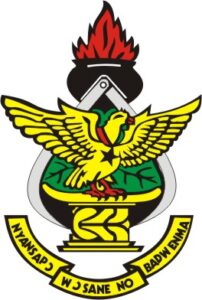
Medical imaging is a technology used to produce visual representations of the interior of the body for clinical study and medical intervention.
BS.c Medical Imaging KNUST program is designed to train students in the use of various imaging techniques, such as X-rays, CT scans, and MRI, to diagnose and treat medical conditions.
The program covers a range of topics, such as anatomy, physiology, medical physics, and medical ethics. Students will also gain practical experience through clinical placements in hospitals and other medical facilities.
After completion, graduates can pursue careers as medical imaging technologists, radiographers, or other medical imaging professionals.
Objectives
- To detect, diagnose, and treat diseases and injuries by creating visual representations of the interior of the body.
- To identify and locate tumors, fractures, and other abnormalities, as well as to monitor the progress of treatment.
- To guide surgical procedures and to provide non-invasive alternatives to traditional diagnostic procedures.
BSc MEDICAL IMAGING KNUST ADMISSION REQUIREMENTS
Applicants must satisfy the university’s general requirements. To be qualified for admission, prospective applicants must have the following requirements.
WASSCE/SSSCE APPLICANTS
- Credit passes in three (3) core subjects: English language, Mathematics, and Integrated Science.
- Credits pass in three (3) elective subjects: Physics, Chemistry, Biology.
A’ LEVEL APPLICANTS
Five (5) credits at O’ Level subjects including English Language and Mathematics or its equivalent additional three (3) passes at the A’ Level in Biology, Chemistry, Physics.
MATURE APPLICANTS
Applicants must be 25 years old at the time of submitting the application.
EITHER five (5) at the O’ Level, including English Language, Mathematics, Chemistry, Physics.
OR WASSCE/SSSCE Credit passes in three (3) core subjects: English language, Mathematics, Integrated Science. Credits passes in three (3) elective subjects: Physics, Chemistry, Biology.
OTHER APPLICANTS
Candidates with a minimum of three (3) years of work experience who are Registered Diagnostic Medical Sonographers (RDMS) certified or equivalent from a recognized institution are eligible to apply. Interview requirements also apply to mature candidates.
BSc Medical Imaging KNUST cut-off points.
BSc Medical Imaging KNUST cut off points are very important to guide applicant in the process of selecting their course at KNUST. Therefore, student who want to apply must meet the cut-off points of the school before applying.
BSc Medical Imaging KNUST cut-off points are 10.
CLICK HERE TO APPLY https://apps.knust.edu.gh/admissions/apply
Follow us on WhatsApp for more updates: https://whatsapp.com/channel/0029VaCyYGIFHWpx22L38a2K
Seekers Consult
Contact Us for Your Study Abroad Journey
We search for schools and check available scholarships for you
Contact: 0550414552 / 0362297079

Loan for government workers
Transcript Application
English Proficiency
Recommendation letter
Project work/thesis for undergraduate, master’s, and PhD students.
Apply for Affidavit, Gazette instantly
Passport and Visa Applications
All other Internet Services
University of Ghana (Legon) BSc. Diagnostic Radiography Programme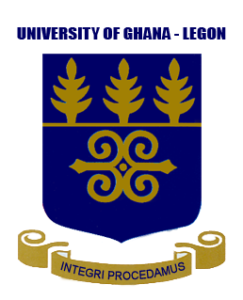
Diagnostic Radiography is a specialized branch of medical science that utilizes various forms of radiation to produce high-quality clinical images. These images play a crucial role in diagnosing and treating injuries and diseases.
What is Diagnostic Radiography?
Diagnostic Radiography is a technology-driven discipline that integrates:
- Basic sciences (physics, biology, chemistry)
- Medical and physiological sciences
- Hands-on clinical training
Radiographers use advanced imaging technologies, including:
- X-ray
- Ultrasound
- Computed Tomography (CT) Scanners
- Magnetic Resonance Imaging (MRI)
- Mammography
Career Opportunities
Diagnostic Radiographers (also known as Radiologic Technologists or Medical Radiation Technologists) work in various healthcare settings, such as:
- Hospitals
- Clinics
- Medical Laboratories
- Private Practices
This field combines scientific knowledge, technical expertise, and patient care, making it a dynamic and rewarding career in modern healthcare.
CLICK HERE TO APPLY https://admissions.ug.edu.gh/undergraduate/how-to-apply
Follow us on WhatsApp for more updates: https://whatsapp.com/channel/0029VaCyYGIFHWpx22L38a2K
Seekers Consult
Contact Us for Your Study Abroad Journey
We search for schools and check available scholarships for you
Contact: 0550414552 / 0362297079

Loan for government workers
Transcript Application
English Proficiency
Recommendation letter
Project work/thesis for undergraduate, master’s, and PhD students.
Apply for Affidavit, Gazette instantly
Passport and Visa Applications
All other Internet Services
UNIVERSITY FOR DEVELOPMENT STUDIES
(UDS) BSc. Medical Imaging Technology Programme
- Programme Overview
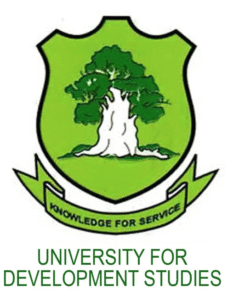
Medical Imaging Technology (MIT) involves advanced techniques for creating visual representations of the human body’s internal structures. These images assist in:
- Clinical analysis & diagnosis
- Medical interventions
- Evaluating organ/tissue function
MIT is primarily non-invasive but requires expertise in:
- Radiation physics & imaging technology
- Human anatomy & physiology
- Patient care & safety protocols
Key Imaging Modalities Covered:
- X-ray Radiography
- Magnetic Resonance Imaging (MRI)
- Medical Ultrasonography
- Computed Tomography (CT)
- Fluoroscopy
- Positron Emission Tomography (PET)
- Single-Photon Emission Computed Tomography (SPECT)
Programme Focus:
- The BSc Medical Imaging Technology program equips students with:
Practical clinical skills in imaging technology
Proficiency in patient care & professional ethics
Hands-on training in modern diagnostic tools
(Also referred to as Diagnostic Radiography, Radiologic Technology, or Medical Imaging in other institutions.)
- Entry Requirements
- WASSCE Candidates
- Core Subjects (A1-C6): English, Core Mathematics, Integrated Science
- Elective Subjects (A1-C6): Physics, Biology, and Chemistry (or Elective Mathematics)
- SSCE Candidates
- Core Subjects (A-D): English, Core Mathematics, Integrated Science
- Elective Subjects (A-D): Physics, Biology, Chemistry, or Mathematics)
- GCE (A-Level) Candidates
- 5 Credits at O-Level: English, Mathematics, and Physics/Chemistry/Biology
- 3 Passes at A-Level: Biology, Physics, Chemistry/and Mathematics
- Mature Applicants (25+ Years)
- WASSCE/SSCE/GCE credits in 5 science-based subjects
- 3 years of relevant work experience
- Must pass an aptitude test/interview
- Allied Health Professionals
- Diploma/HND in Radiography/Diagnostic Imaging (admitted to Year 2 or 3)
- Nurses (SRN/RMN/RGN) with 3+ years of clinical experience
- Must pass an aptitude test/interview
- Graduate Entry (Second Class Lower or Better)
- Bachelor’s in: Physics, Mathematics, Computer Science, Health Informatics, etc.
- Admitted into Year 2 after passing an aptitude test/interview
- International Students
- Equivalent qualifications (IB, GCE, IGCSE, American High School Diploma)
- Proof of English proficiency (for non-English speaking countries)
- Cut-Off Points
| Category | Aggregate/Grade Requirement |
| WASSCE (Regular) | 6 – 11 |
| WASSCE (Fee-Paying) | 12 – 16 |
| Diploma/HND/Degree (Top-Up) | Second Class Lower or Better |
CICK HERE TO APPLY
https://admissions.uds.edu.gh/
Follow us on WhatsApp for more updates: https://whatsapp.com/channel/0029VaCyYGIFHWpx22L38a2K
Seekers Consult
Contact Us for Your Study Abroad Journey
We search for schools and check available scholarships for you
Contact: 0550414552 / 0362297079

Loan for government workers
Transcript Application
English Proficiency
Recommendation letter
Project work/thesis for undergraduate, master’s, and PhD students.
Apply for Affidavit, Gazette instantly
Passport and Visa Applications
All other Internet Services



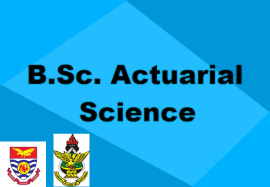

1 thought on “Admission Requirements for BSc. Diagnostic Imaging & Sonography Programme – UCC | KNUST | UG | UDS”